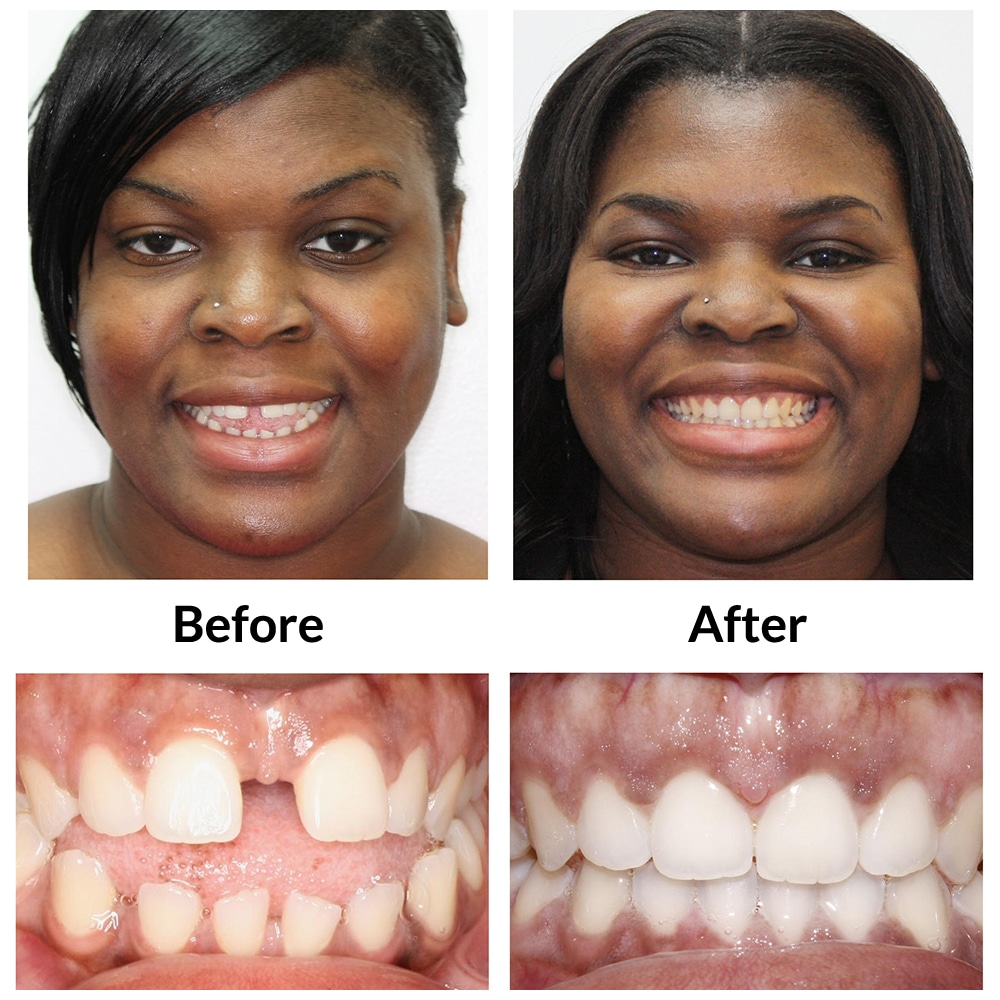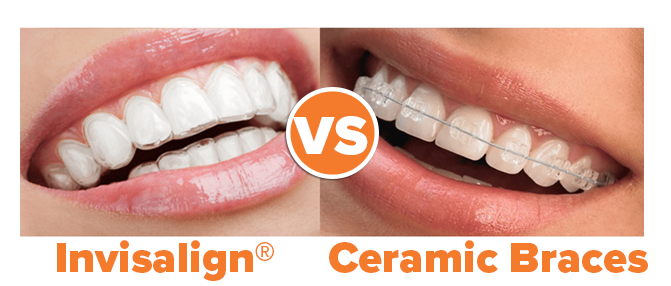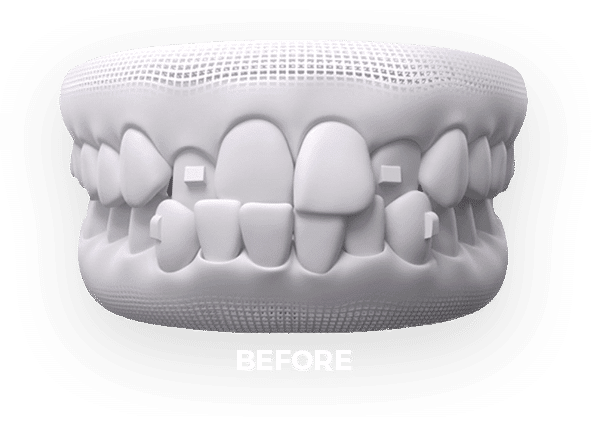Discover the Perks of Invisalign for a Perfect Smile Transformation
Discover the Perks of Invisalign for a Perfect Smile Transformation
Blog Article
Invisalign vs. Traditional Dental braces: Which Option Is Right for You?
When thinking about orthodontic therapy, the selection in between Invisalign and conventional braces presents several vital variables that warrant cautious evaluation. Invisalign uses a very discreet option with removable aligners, while traditional dental braces supply a more visible yet efficient service for severe imbalance.
Summary of Treatment Alternatives

On the other hand, standard dental braces are composed of steel brackets and wires that are bound to the teeth. This method uses continual stress gradually to attain positioning. While effective for intricate orthodontic problems, standard dental braces require routine brows through for modifications and can present difficulties in preserving dental hygiene because of the problem of cleaning up around wires and brackets.
Both alternatives have their qualities, and the choice frequently depends upon details dental conditions, way of life preferences, and client compliance. Eventually, speaking with an orthodontic specialist is critical for determining one of the most suitable therapy plan customized to individual demands. Recognizing the nuances of each choice can considerably influence the general success of orthodontic therapy.
Visual Factors To Consider
A significant variable affecting the choice between Invisalign and traditional dental braces is the aesthetic appeal each therapy uses. Invisalign aligners are crafted from clear plastic, making them practically unnoticeable when put on.
On the other hand, typical braces are composed of metal braces and cables, which can be more obvious. While developments in orthodontic modern technology have actually brought about the development of smaller brackets and colored elastics, typical braces still maintain a more conspicuous profile. For some people, the visibility of braces may discourage them from looking for essential treatment.
Ultimately, the selection between Invisalign and typical braces may pivot on personal preferences concerning looks. People that focus on discretion usually lean toward Invisalign, while those who are less worried regarding visibility may select traditional braces. Recognizing the aesthetic ramifications of each choice is crucial for making an educated choice that straightens with one's way of living and choices.
Comfort and Convenience

In regards to benefit, Invisalign aligners are detachable, allowing clients to appreciate their preferred foods without limitation and keep ideal dental hygiene. Brushing and flossing are simplified, as the aligners can be obtained throughout these routines, whereas traditional dental braces require mindful maneuvering around cables and braces.
Furthermore, Invisalign's modern system permits fewer orthodontic gos to. Patients generally get numerous sets of aligners at as soon as, which can improve the treatment process and decrease time invested in the orthodontist's chair. On the other hand, typical braces necessitate normal modifications, making them less convenient for those with busy schedules. Invisalign. Overall, the comfort and ease of Invisalign make it an appealing choice for numerous individuals seeking orthodontic therapy.
Therapy Duration and Performance
While both Invisalign and standard dental braces are effective in fixing oral misalignments, the duration of treatment can vary dramatically between both alternatives. Typically, Invisalign therapy can take anywhere from 12 to 18 months, depending on the intricacy of the situation. The clear aligners work by gradually shifting teeth right into their additional reading wanted positions, and normal follow-ups with an orthodontist help ensure progress remains on the right track.
On the other hand, typical braces commonly require a longer dedication, normally ranging from 18 months to 3 years. This results from their set nature and making use of cords and braces, which can be much more effective for complex cases and severe imbalances (Invisalign). The therapy efficiency of conventional dental braces is well-documented, as they enable specific modifications and higher control over tooth movement
Inevitably, the choice between Invisalign and typical dental braces might hinge on both the anticipated therapy period and the specific oral concerns handy. Consulting with an orthodontist is essential, as they can provide customized suggestions based on specific requirements, ensuring the chosen approach straightens with preferred results and durations.
Expense Comparison and Insurance Choices
Expense plays a substantial role in the decision-making procedure for individuals considering orthodontic treatment, whether going with Invisalign or traditional dental braces. Generally, the price of Invisalign varieties from $3,000 to $8,000, while traditional dental braces normally set you back between $2,000 and $6,000. Variables influencing these prices include the intricacy of the situation, the period of treatment, and geographical location.
Several dental insurance coverage strategies provide partial protection for orthodontic therapies, yet the specifics can differ widely. Typically, typical dental braces might be a lot more often covered by insurance company website plans contrasted to Invisalign, which some insurance firms categorize as a cosmetic procedure.
Furthermore, a number of orthodontic techniques supply adaptable layaway plan, making both treatment options much more easily accessible. People need to inquire concerning potential financing options and discounts for upfront payments. Assessing the total cost, consisting of insurance advantages and settlement strategies, is crucial for making an educated choice that lines up with both aesthetic preferences and budget considerations.

Conclusion
In summary, the choice in between Invisalign and traditional dental braces rests on numerous aspects, consisting of aesthetic preferences, convenience, therapy duration, and cost. Invisalign supplies a very discreet, detachable choice that helps with oral health and nutritional flexibility, while traditional dental braces might be better for intricate oral problems and frequently come at a lower price factor. Eventually, assessment with an orthodontist is necessary to analyze specific situations and determine one of the most appropriate therapy choice for achieving optimum dental placement.
When taking into consideration orthodontic treatment, the selection between Invisalign and conventional braces offers several vital aspects that merit cautious assessment.Contrasting Invisalign and conventional Get the facts braces reveals unique treatment choices for orthodontic correction.While both Invisalign and standard braces are reliable in correcting oral imbalances, the duration of therapy can vary dramatically between the 2 options.Expense plays a substantial role in the decision-making process for people considering orthodontic therapy, whether deciding for Invisalign or conventional dental braces.In recap, the choice between Invisalign and typical dental braces hinges on several variables, including aesthetic choices, convenience, treatment duration, and expense.
Report this page